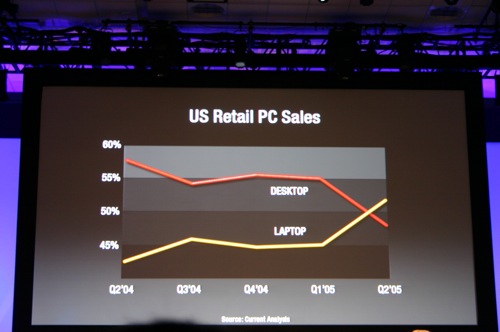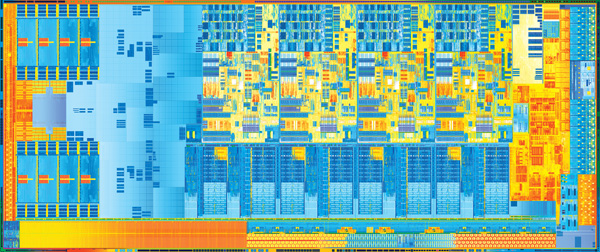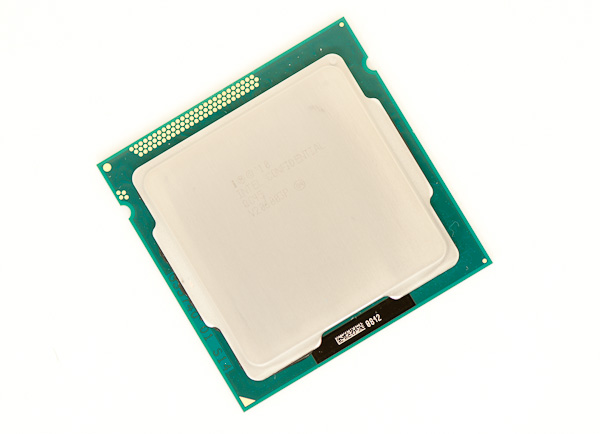The Intel Ivy Bridge (Core i7 3770K) Review
by Anand Lal Shimpi & Ryan Smith on April 23, 2012 12:03 PM EST- Posted in
- CPUs
- Intel
- Ivy Bridge
The times, they are changing. In fact, the times have already changed, we're just waiting for the results. I remember the first time Intel brought me into a hotel room to show me their answer to AMD's Athlon 64 FX—the Pentium 4 Extreme Edition. Back then the desktop race was hotly contested. Pushing the absolute limits of what could be done without a concern for power consumption was the name of the game. In the mid-2000s, the notebook started to take over. Just like the famous day when Apple announced that it was no longer a manufacturer of personal computers but a manufacturer of mobile devices, Intel came to a similar realization years prior when these slides were first shown at an IDF in 2005:
IDF 2005
IDF 2005
Intel is preparing for another major transition, similar to the one it brought to light seven years ago. The move will once again be motivated by mobility, and the transition will be away from the giant CPUs that currently power high-end desktops and notebooks to lower power, more integrated SoCs that find their way into tablets and smartphones. Intel won't leave the high-end market behind, but the trend towards mobility didn't stop with notebooks.
The fact of the matter is that everything Charlie has said on the big H is correct. Haswell will be a significant step forward in graphics performance over Ivy Bridge, and will likely mark Intel's biggest generational leap in GPU technology of all time. Internally Haswell is viewed as the solution to the ARM problem. Build a chip that can deliver extremely low idle power, to the point where you can't tell the difference between an ARM tablet running in standby and one with a Haswell inside. At the same time, give it the performance we've come to expect from Intel. Haswell is the future, and this is the bridge to take us there.
In our Ivy Bridge preview I applauded Intel for executing so well over the past few years. By limiting major architectural shifts to known process technologies, and keeping design simple when transitioning to a new manufacturing process, Intel took what once was a five year design cycle for microprocessor architectures and condensed it into two. Sure the nature of the changes every 2 years was simpler than what we used to see every 5, but like most things in life—smaller but frequent progress often works better than putting big changes off for a long time.
It's Intel's tick-tock philosophy that kept it from having a Bulldozer, and the lack of such structure that left AMD in the situation it is today (on the CPU side at least). Ironically what we saw happen between AMD and Intel over the past ten years is really just a matter of the same mistake being made by both companies, just at different times. Intel's complacency and lack of an aggressive execution model led to AMD's ability to outshine it in the late K7/K8 days. AMD's similar lack of an execution model and executive complacency allowed the tides to turn once more.
Ivy Bridge is a tick+, as we've already established. Intel took a design risk and went for greater performance all while transitioning to the most significant process technology it has ever seen. The end result is a reasonable increase in CPU performance (for a tick), a big step in GPU performance, and a decrease in power consumption.
Today is the day that Ivy Bridge gets official. Its name truly embodies its purpose. While Sandy Bridge was a bridge to a new architecture, Ivy connects a different set of things. It's a bridge to 22nm, warming the seat before Haswell arrives. It's a bridge to a new world of notebooks that are significantly thinner and more power efficient than what we have today. It's a means to the next chapter in the evolution of the PC.
Let's get to it.
Additional Reading
Intel's Ivy Bridge Architecture Exposed
Mobile Ivy Bridge Review
Undervolting & Overclocking on Ivy Bridge
Intel's Ivy Bridge: An HTPC Perspective




















173 Comments
View All Comments
sld - Wednesday, April 25, 2012 - link
.... and in this multivariate comparison you choose to ignore the superior battery life which makes Llano a serious competitor in the mobile space.midn8t - Thursday, June 28, 2012 - link
this the frames pre secound for CPU, you cant really figure out well when gamming its all mostly based around what ever video card they used, in this artical so I would have to guess that they might have used diffrent GPU video card in each system.obivuously they cant use same motherboard for amd vs intel
Also I find it wired that other reciews have Rated the phenom II x6 lower in preformance then the FX chip makes it wired how these review claims that the phenom II which is lower grade CPU is more powerfull then the top of the line AMD product out.
zeagus - Wednesday, April 25, 2012 - link
A huge chunk of text is spent explaining how while its a step in the right direction, they need to do more on the GPU side of the equation. Take off your strangely coloured glasses.wingless - Monday, April 23, 2012 - link
EDIT: I'M NOT KIDDING. I bought my 2600K the Friday before last for $199 and paired it with an ASUS P8Z77-V PRO. Ivy Bridge is simply too hot and lacks OC performance.I overclock so I WILL be keeping my 2600K for the foreseeable future!
fredisdead - Sunday, April 29, 2012 - link
So HD4000 igp is weaker than last gen Brazos ?? Based on the leaked Trinity benchmarks, Trinity blows any Intel igp into the weeds, never mind the ( already 1.5 yr old ) Brazos, which is 'only' 5% faster.fredisdead - Sunday, April 29, 2012 - link
So HD4000 igp is weaker than last gen Brazos ?? Based on the leaked Trinity benchmarks, Trinity blows any Intel igp into the weeds, never mind the ( already 1.5 yr old ) Brazos, which is 'only' 5% faster.1ceTr0n - Monday, April 23, 2012 - link
I'll keep my 2500k @ 4.6ghzNot kidding
smookyolo - Monday, April 23, 2012 - link
And I'll keep mine at 4.9GHz.But that's just because I'll be waiting for the tock, not the tick.
I will however be getting a Ivy Bridge Laptop soon.
Flunk - Monday, April 23, 2012 - link
Me too, the 2500K is a great chip. Especially with watercooling.Ratman6161 - Monday, April 23, 2012 - link
For anyone like me who already has a Sandy Bridge quad core (mine's a 2600K) it wouldn't make a lot of sense to "upgrade" to an Ivy bridge. But for those with older systems looking to upgrade, these actually seem like pretty good deals. @ $313 the 3770K is cheaper than the 2700K and cheaper than the typical price on a 2600K (unless like me you are lucky enough to live near a Micro Center).As to those complaining about graphics, come on. Will anyone who really cares a lot about graphics, particularly gaming, be using the on board graphics anyway?